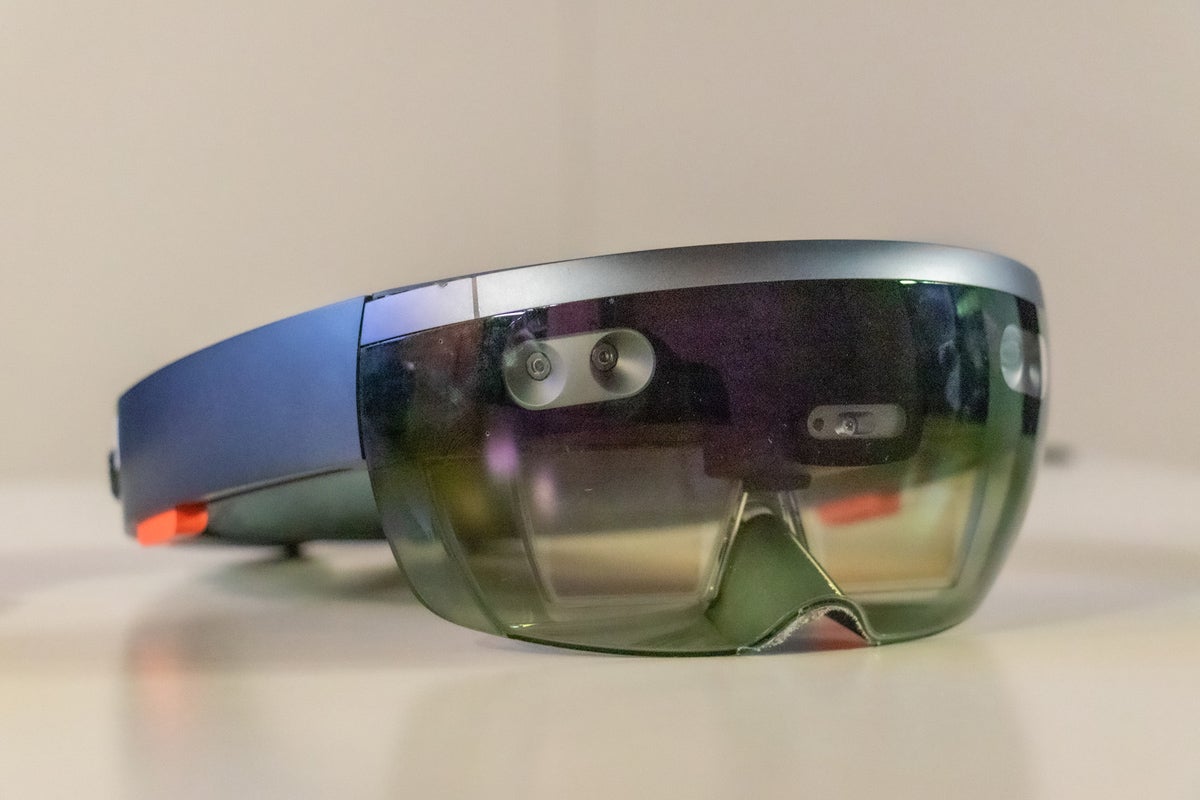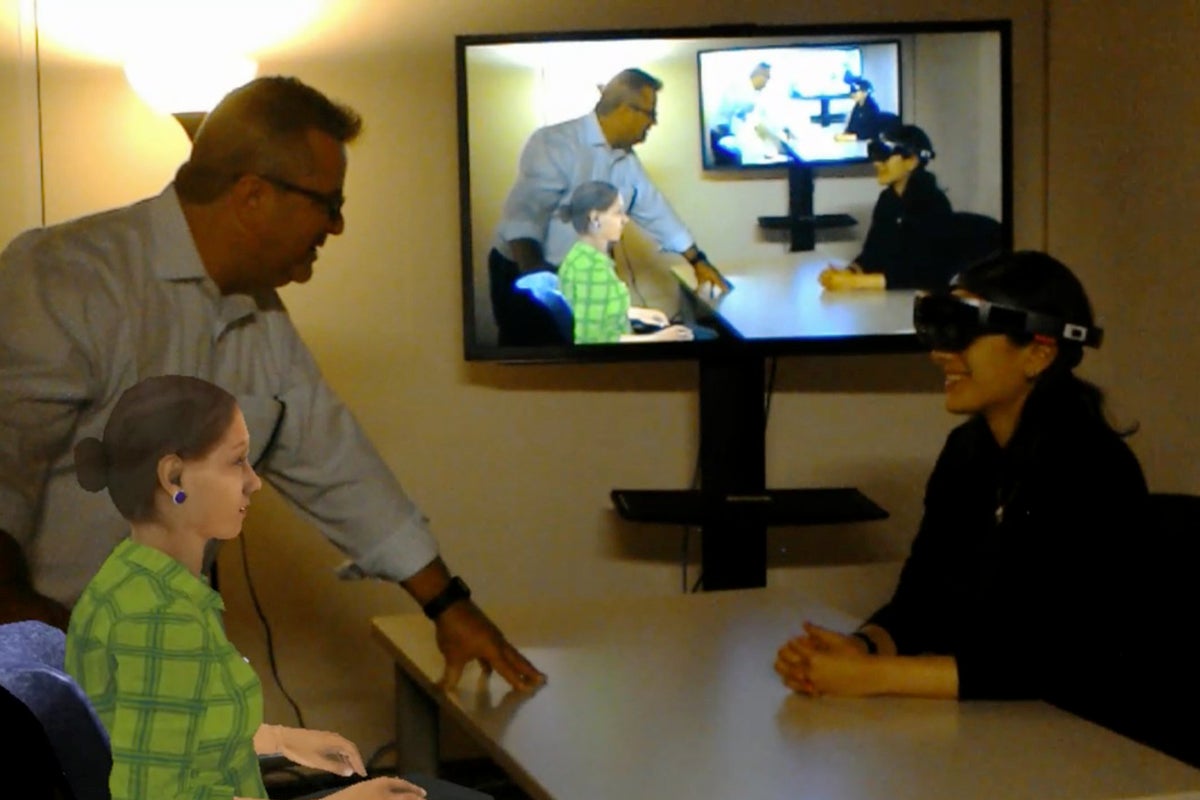Interacting with virtual humans in an augmented reality training environment seems to carry over into the real world, prompting people to respect the personal space of virtual characters even when they are no longer visible.
That’s one of the findings in a new study Stanford and UCF published in the journal PLOS ONE.
The results of three experiments included in the study indicate that AR experiences can affect real-world behavior, which is important as AR is being used more and more to train nurses, doctors and other health care professionals.
“Part of the goal of trying to create virtual humans for health care education is that they produce reactions from the health care provider or elicit behaviors corresponding to a real person,” says Greg Welch, an endowed chair in UCF’s College of Nursing who is a co-author of the study. “You want the students to act in the learning environment as if it was real. So, for example, students should connect to a virtual patient as they would a real patient.”
Health care training often relies on medical training mannequins or patients portrayed by skilled actors. These simulated patients allow students to learn in a safe environment, where mistakes don’t actually harm a real patient.
With the addition of AR, which superimposes digital images on real-world environments, the richness and realism of the experiences are thought to be increased. For example, AR could be used to show a student a three-dimensional diagram of a mannequin patient’s organs or to simulate a patient’s parents so that students can practice breaking bad news to loved ones.
The use of AR in health care training is infrequent but increasing in use, Welch says.
The study consisted of three experiments, each exploring the relationship between people and AR. In the first experiment, researchers found participants completed hard tasks less proficiently and easy tasks better when an AR person was present, mimicking the typical real-world occurrences of social facilitation and inhibition.
In the third experiment, researchers found that people wearing headset equipment allowing them to see AR images felt less connected to people who were not wearing headsets.
The second experiment, which reinforces prior work by Welch and study co-author Jeremy Bailenson, a professor in Stanford University’s Department of Communication, examined whether subjects in an AR setting would sit in a chair already perceived to be occupied by a virtual human.
The researchers found that most people would not sit in the chair occupied by the AR person, even if they had their AR headsets off and could see no one was really there. Additionally, no participants wearing the AR headsets and seeing the AR person sat in the virtually occupied chair.
Previous work by Welch and colleagues has also found people would avoid walking through a virtual human who was only visible through an AR headset, even after removing the AR headset.
“If a person is present, we generally try to give them space,” Welch says. “There’s something ingrained in our human nature and reinforced through real world cultural norms that makes it hard for us to violate another person’s space. We choose to avoid each other if possible.”

The emerging understanding supports the idea that real people tend to treat AR people as if they were really present, supporting the idea that AR patients or AR family members of patients could be effective additions to health care education.
“Showing that AR technology is effective in such circumstances is a small step toward people having confidence in using it for training,” Welch said.
The research was carried out at Stanford University in California.
Co-authors of the study also included Mark Roman Miller, a doctoral student in Stanford’s Computer Science Department; Hanseul Jun and Fernanda Herrera, doctoral students in Stanford’s Department of Communication; and Jacob Yu Villa, a graduate of Stanford’s Symbolic Systems Program.
Welch is the AdventHealth Endowed Chair in Healthcare Simulation at UCF’s College of Nursing. He is also the co-director of the UCF Synthetic Reality Laboratory. He holds additional faculty appointments in the Department of Computer Science at the UCF College of Engineering and Computer Science and in the UCF Institute for Simulation & Training. He received his doctorate and master’s degrees in computer science from the University of North Carolina at Chapel Hill and his bachelor’s degree in electrical engineering technology from Purdue University. He joined UCF in 2011.




